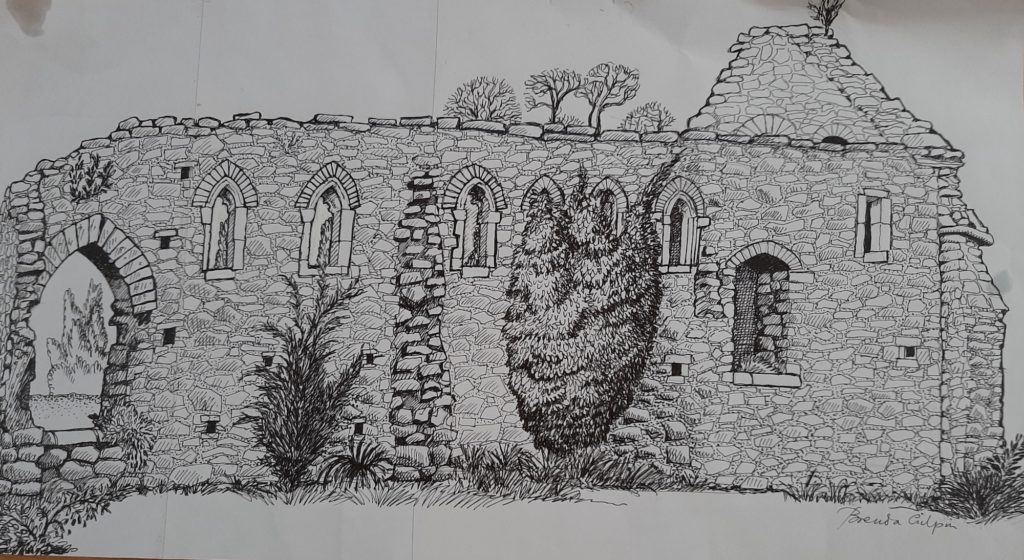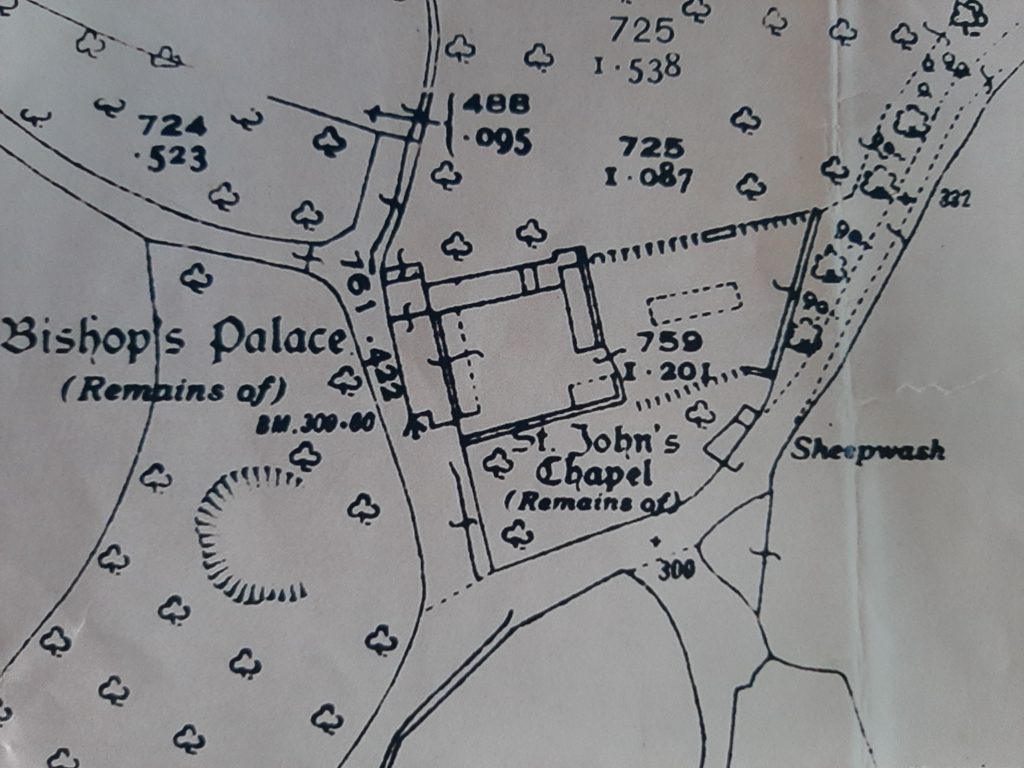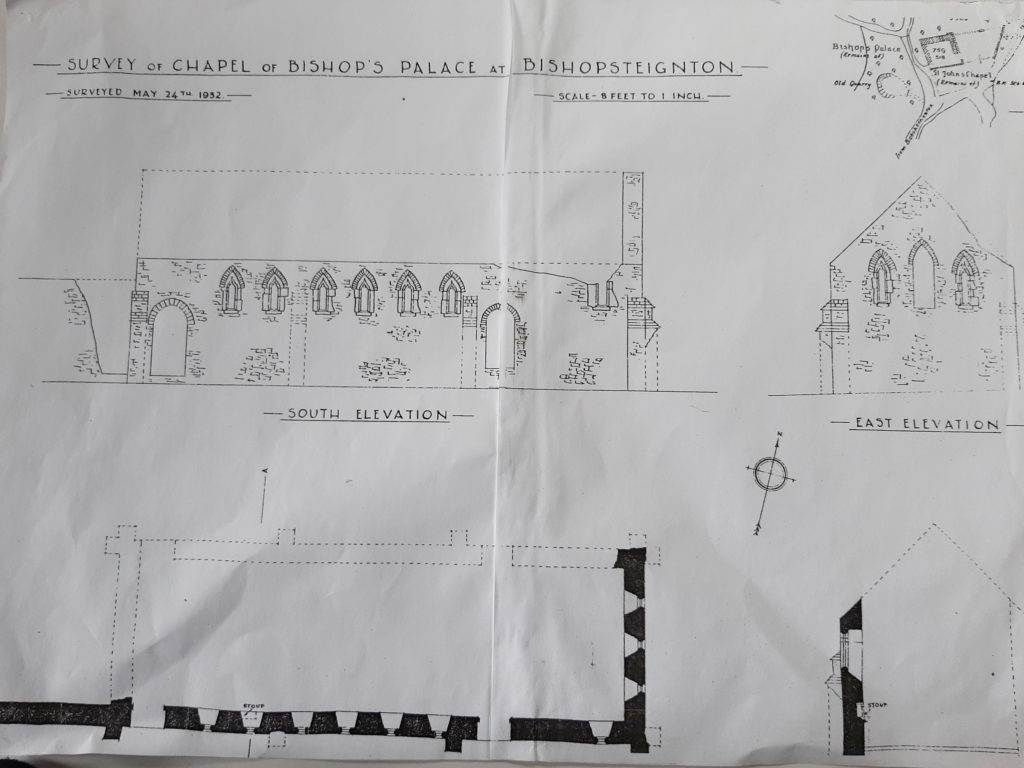The Bishops’ Palace is on the site of a Benedictine monastery in the “Old Walls” area of Bishopsteignton.
11th Century
In 1042 AD Edward the Confessor became King and Crediton was the seat of the Bishops of Devon and Cornwall. He appointed Leofric who was his Chaplain, Chancellor and Privy Councillor to the Bishop in the same year. In 1050 AD the seat was moved to Exeter, because it was a walled town and Leofric was installed as the first Bishop of Exeter. Several Charters of endowment were bestowed on him by the King and Teignton or Taintona was one of them.
Bishop Leofric did not care for the Benedictine Monks that King Athelstain had freely installed in various parts of the Diocese and under Edward the Confessor had them removed and installed Secular Canons. The Monks at “Old Walls” also departed and the buildings were rearranged to form the Bishops’ Palace.
There were several gaps between the death of one Bishop and the appointment of another Bishop. This was generally due to national or ecclesiastical troubles. There was also, at times, an interval of months or years between their appointment and consecration.
12th Century
Bishop Warerwast, who was nephew of the Chaplain to King William the Conqueror and his sons Rufus the Red King and Henry I, was appointed Bishop of Exeter and was consecrated by Anselm, Archbishop of Canterbury on August 11th 1107. The seat had been vacant for four years because of disputes between the Archbishop and Henry I, who would not allow any Bishops to be chosen. The new Bishop accompanied King Henry I on his visit to Normandy and, like many Normans, was a builder. Many churches were built by him; the present Exeter Cathedral was begun by him and the two existing towers are a testimony to his ability.
Bishop Brewer, in about 1130, made several visits to the village. While living at Old Walls Palace or House, he confirmed a deed to the Abbot and Convent of Hartland for an annuity of five marks, issuing from the Church of Knowstone. In Bishop Brewer’s time there were no seats in churches, so the clergy desired the Bishop to put small seats in the Cathedral, so they might rest and thus seem to be standing and to this he consented. This also applied to Churches where the congregation stood during a service, except when kneeling on the floor during prayers. The floor was sometimes covered with straw or rushes. If one was elderly or infirm and could not continue to stand, they walked to the wall, where there was a stone ledge or seat, thus the weakest “went to the wall”.
13th Century
Stephan Langton, who was born in Exeter, became Archbishop of Canterbury and helped to establish the Magna Carta by getting all the Barons to meet in different towns; Bury St Edmunds, St Albans, Canterbury, City of London, Runnymede and Hereford.
The Magna Carta was sealed by King John on 15th June 1215 at Runnymede. The Magna Carta was then revised four times in 1225, 1265 and the last one in 1297, which was solely for the City of London, states ” the City of London shall have all its ancient liberties by land as well by water” which became part of English Law. It is the only one that has its seal still intact and that law and liberty is now enjoyed by nearly two billion people in 100 countries.
Archbishop Stephan Langton also arranged the Bible into Chapters and Verses.
Bishop Bronscombe (1258-1280) was born to poor parents, but by grit and perseverance and being of great character rose to his high position in 10 years. After he was made Bishop of Exeter he dedicated 88 rebuilds or altered churches. He also instituted the Episcopse Registers and there are many references to Bishopsteignton. He often resided at the Palace and it is recorded that he was there for a few days in the years 1261, 1264, 1272, 1275, 1276, 1277, 1278, 1279 and 1280. It is also reported that he died at his favourite Palace in Bishopsteignton on 22nd July 1280.
The Palace soon fell into disrepair and Bronscombe’s three successors – Quivil (1280 – 1291) Bytton (1291 – 1307) and Stapledon (1307 – 1326) hardly used the Palace, although Stapledon may have used it, but only for recreational purposes and therefore would have not had to make an entry in the register.
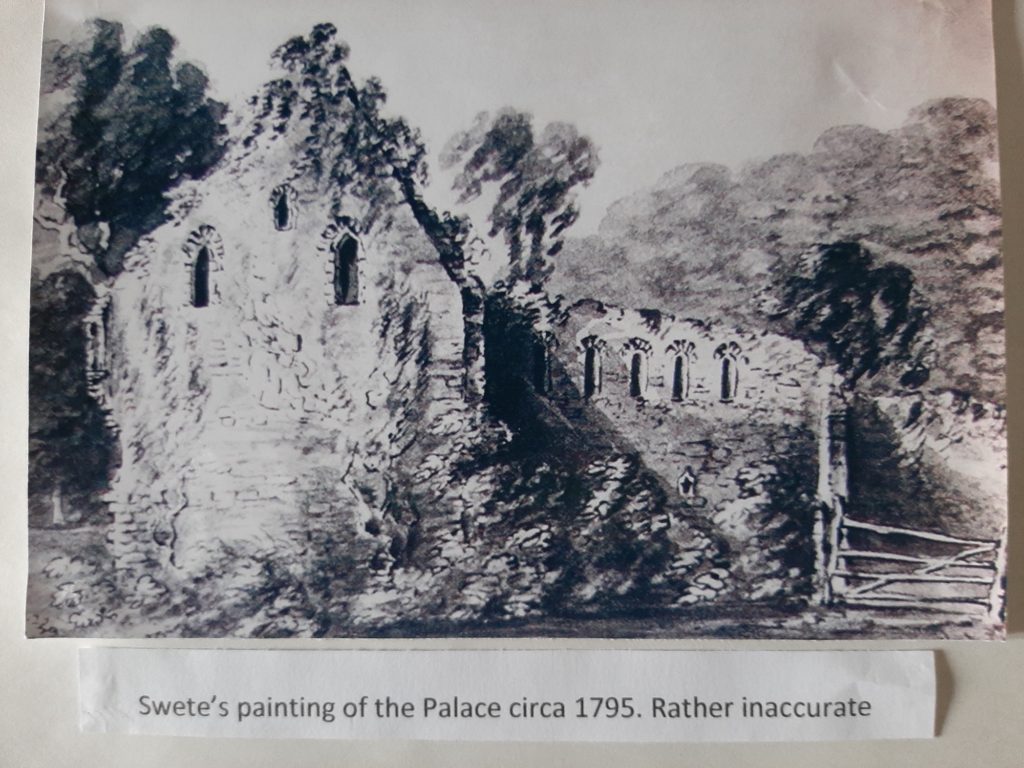
Swete’s painting of the Palace ruins in 1795
14th Century
In 1328 Bishop Grandisson (1327 – 1369) petitioned his friend Pope John XXI that he might assume possession of the Palace and farm, to keep it for himself and his successors in perpetuity, giving the reason that the seat, when vacant, would be retained by the Crown. If it was not vacant, then the Bishops would always have somewhere to lay their heads. He obtained the Pope’s consent and proceeded to erect in the sanctuary of Radway a sumptuous house. In his will of 1369 it states, “and let not my successors consign to oblivion how, with much travail and personal experience I went to the Roman court and obtained from them the appropriation of the church at Radway, in their manor of Bishopsteignton and likewise the consent and charter of the King, and how I erected convenient and sumptuous buildings there in the sanctuary, that they might have there to lay their head if their temporabilities should be signed into the hand of the King”
During the Black Death, in which Bishop Grandisson lost two sisters and some nephews, he lived at the Bishops’ Palace at Old Walls. Then in 1361 he ordered the vicar of Bishopsteignton to officiate once a week in the chapel of St John at Radway.
Bishop Brantyngham succeeded Bishop Grandisson and it is recorded that he only visited the Palace once on March 2nd and 3rd 1373 when he installed priests in the chapel.
The next two Bishop’s Stafford and Catterick, did not use the Palace at all.
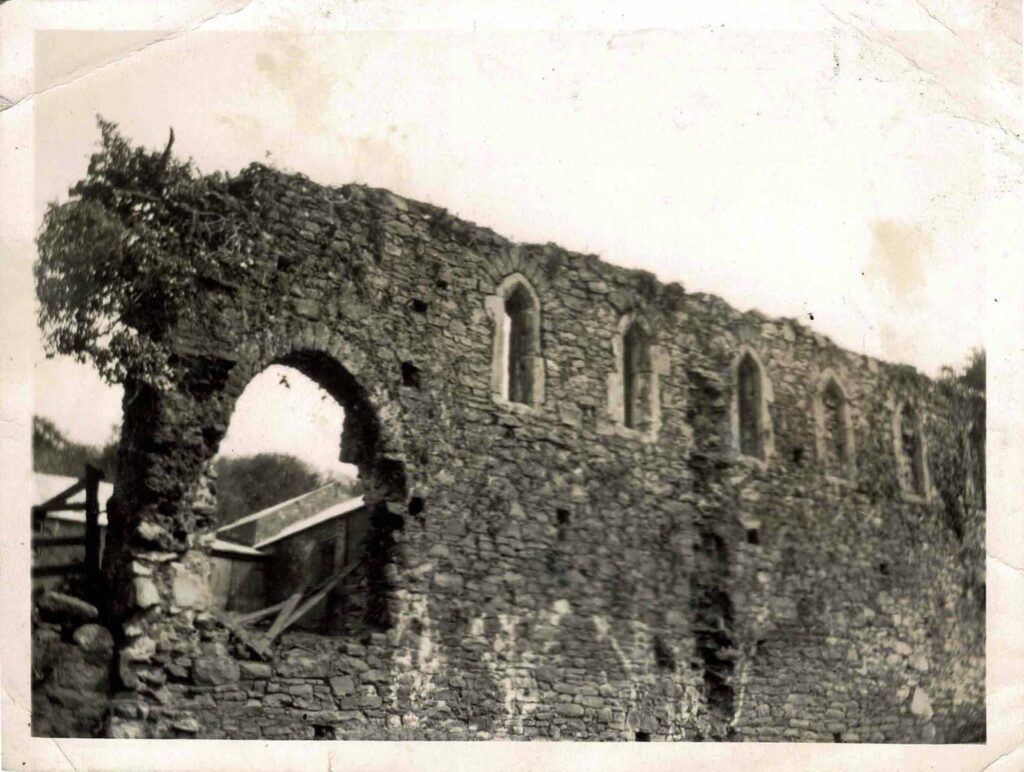
Photograph of Bishop’s Palace ruins, Bishopsteignton, c. 1910.
15th Century
Bishop Lacy (1420 – 1455). It is not until Bishop Lacy that Radway was regularly mentioned as a Palace where official acts took place. The first seems to have been in June 1423 about six months after he had taken up full time residence in the Diocese. The registers of subsequent Bishops have not been published, so there is no way of estimating how often they visited Bishopsteignton. However a survey of houses made after Bishop Redman (1495 – 1501) suggests that Radway was becoming unattractive to the Bishops.
16th & 17th Centuries
In 1550 Bishop Veysey was compelled by Edward VI to dispose of the rural manors including Bishopsteignton. The manors of Lyndridge and Radway were conveyed along with other properties to Sir Andrew Dudley who immediately re-conveyed the Bishops’ Manors to Richard Duke.
By 1611 the manors had been leased to Richard Manton of Middle Temple in London. The Palace site is now amongst farm buildings belonging to Ash Hill Farm which for some 250 years was home to the Whidborne family. It is recorded that a member to the Whidborne family, Thomas Whidburn of Ashill Farm, destroyed the chapel – an old chapel in the Bishops’ House. He then used the stone to repair his house and farm buildings. Members of the Whidborne family were stewards of the Palace estates during the latter years of its occupancy by the Bishops.
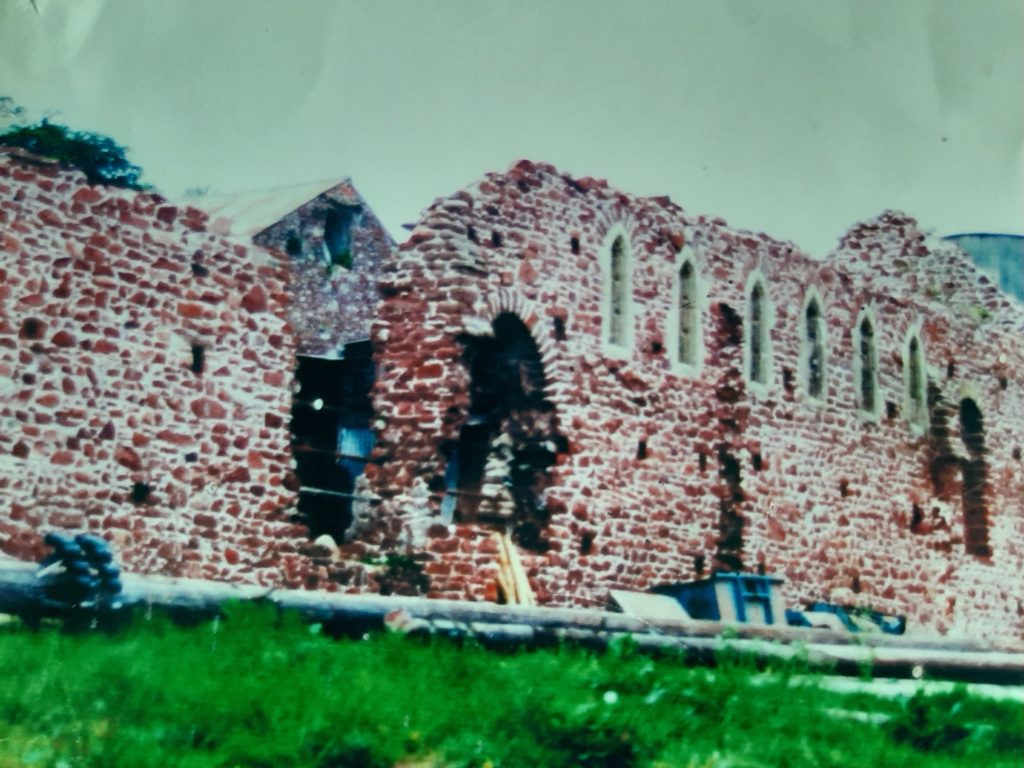
A photograph of the Palace ruins taken in 1987
It is assumed that from then on, stone has been rolled away to build houses at “Old Walls” end of the village. Hence this area is called “Old Walls”. The Palace ruins now stand on farmland owned by a member of the Dawe family.

